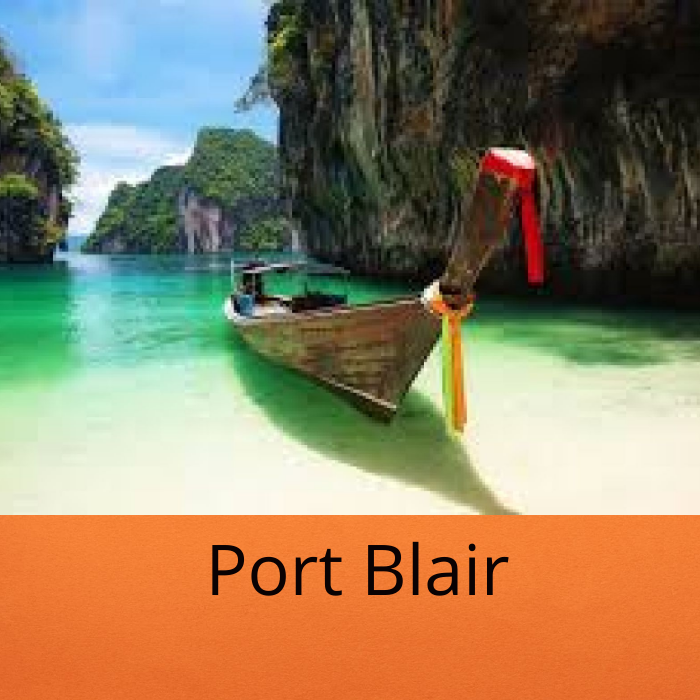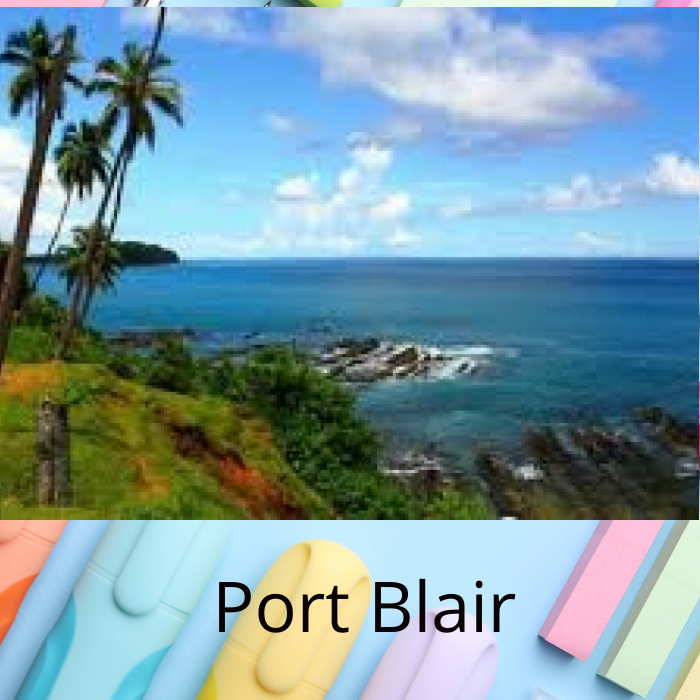Port Blair
Renaming Port Blair, according to Amit Shah, is in line with Prime Minister Narendra Modi‘s goal of eliminating all traces of colonial authority.
Port Blair was formerly known as “Shri Vijaya Puram,” after an East India Company naval officer who served in British colonial India. Additionally, three Andaman and Nicobar Islands islands had their names changed by PM Modi in 2018.
Amit Shah stressed in a Friday announcement that the Prime Minister’s goal is to free the nation of colonial legacies, and this action reflects that goal. British naval commander Captain Archibald Blair was the inspiration behind the initial name of Port Blair.

Shah clarified in a tweet, saying, “Shri Vijaya Puram holds a unique place in our freedom struggle and history.” He emphasized how the adoption of the new name represents the triumph of the Indian independence cause.
“Shri Vijaya Puram symbolizes the victory of our freedom struggle and the significant role the Andaman and Nicobar Islands played in it,” Shah continued, adding that the former name had colonial overtones. He also highlighted that the Cellular Jail, which housed the imprisonment of liberation fighters like Veer Savarkar, was located here, as well as the site where Netaji Subhas Chandra Bose first raised the tricolor flag.
He added that the Andaman and Nicobar Islands, which were formerly a naval outpost for the Chola empire, have a special position in Indian history and are poised to develop into a key base for future expansion.
In honor of Netaji Subhas Chandra Bose, Prime Minister Modi renamed three islands in 2018: Ross Island, Neil Island, and Havelock Island became Subhas Chandra Bose Island, Shaheed Island, and Swaraj Island, respectively.
In an effort to erase any remnants of colonialism, Modi’s administration has continuously renamed historical locations since taking office in 2014.

Context
Previously called Port Blair after British colonial naval officer Captain Archibald Blair, Port Blair serves as the entry point to the Andaman and Nicobar Islands. The city was renamed to honor India’s rich history and freedom struggle. Port Blairwas previously well-known for the notorious Cellular Jail National Monument, where many freedom fighters were held captive.
In an attempt to bring Indian cultural values into these historic sites, famous landmarks like Rashtrapati Bhavan’s “Durbar Hall” and “Ashok Hall” were renamed “Gantantra Mandap” and “Ashok Mandap” in July.
Inspired by the great maritime dynasty that ruled Southeast Asia from the 7th to the 13th century, the new name, “Shri Vijaya Puram,” was adopted.
The decision has been made by the central government to rename Port Blair as “Shri Vijaypuram.”
This modification was announced on Friday, September 13, 2024 by Union Home Minister Amit Shah. “We have decided to rename Port Blair as ‘Shri Vijaypuram,’ inspired by Prime Minister Narendra Modi’s vision of freeing the nation from colonial influence” Shah wrote in a post on X (previously Twitter).
“Shri Vijaypuram( Port Blair ) symbolizes the victory of our freedom struggle and the unique role the Andaman and Nicobar Islands played in it,” he said in the post, explaining that the previous name bore a colonial heritage. These islands are significant to the history of our nation since they were formerly a naval base for the Chola Empire and are now positioned to play a key role in our country’s future development.
As a Union Territory, the Andaman and Nicobar Islands fall directly under the administrative jurisdiction of the Ministry of Home Affairs. Shah further emphasized that the famous Cellular Jail, where freedom fighters like Veer Savarkar and many others struggled for India’s independence, is located on these islands, as was the site of Netaji Subhas Chandra Bose’s first hoisting of the Indian flag.
Scattered across 836 islands, islets, and rocky formations, the Andaman Islands are renowned for their breathtaking natural beauty, rich flora, and fauna, and unique marine life. This archipelago, which is in the Bay of Bengal, is situated east of the Indian peninsula and floats in magnificent isolation. Previously a part of a mountain range that stretched from Indonesia to Myanmar, these idyllic islands are home to a vast array of rare species and are covered in evergreen woods that are nourished by rain. Just 28 of the 550 islands that make up the Andaman group are inhabited. There are about 22 major islands in the Nicobar Islands, ten of which are inhabited.
The 150-kilometer-wide Ten Degree Channel divides the Andaman and Nicobar Islands from one another.
People have lived on these islands for countless years. Although genetic, cultural, and linguistic research points to human presence as far back as 30,000–60,000 years ago, during the Middle Paleolithic period, early archeological evidence only goes back 2,200 years.
Several indigenous groups live in the Andaman Islands, such as the remote Sentinelese people who first interacted with outsiders in the 1850s and the Great Andamanese. The Nicobarese, who inhabit numerous islands, and the Shompen, who are restricted to Great Nicobar Island’s interior, are the two principal indigenous communities in the Nicobar Islands.
